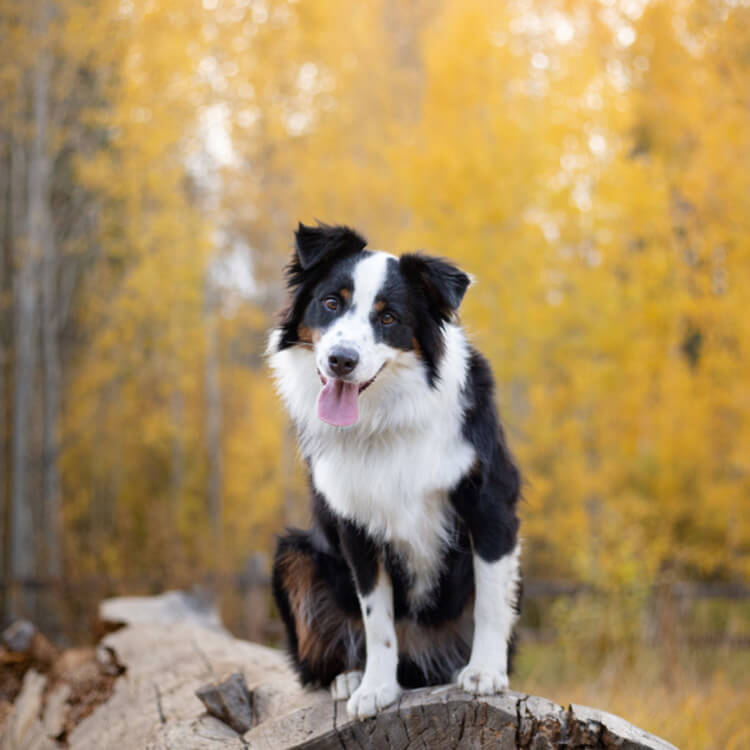The Happy Dog: Decoding Canine Behavior & Body Language
Discover the Secrets to Your Dog’s Happiness by Decoding Their Behavior and Body Language
As a pet owner, you undoubtedly want to ensure that your furry companion is healthy and happy. But did you know that your dog’s health and happiness are closely linked? A happy dog is generally a healthy dog, and vice versa. So, it’s essential to pay attention to your pup’s well-being and take steps to promote their happiness. This blog post is the start of a series I’m calling “The Happy Dog”. Over the next several posts, I’m going to be sharing different areas to focus on to ensure overall happiness (and health!) of your pup.
How do we know when our dogs are happy? We often personify our dogs and assume what makes us happy will also make them happy. However, dogs have different ways of expressing their happiness, and it’s not always easy to interpret what they’re trying to communicate. Thankfully, there are some tell-tale signs that your dog is feeling happy and content. In today’s post, we’ll explore some of the common ways that dogs express happiness, specifically through their body language and behavior.
** Disclaimer: It’s important to remember that every dog is unique and may show happiness in different ways. Also, some behaviors that may seem happy to us can actually be a sign of anxiety, fear, or aggression in certain contexts.
It’s important to understand your dog’s behavior so you can recognize when they’re happy. I’m always on the lookout for signs that Bailey is happy so I can better understand him and continue giving him the best life possible!
Here are 4 behavioral signs that your dog is happy: (again, remember that every dog is unique. Your dog does NOT need to showcase all of these behaviors to prove his happiness)
- Playfulness: Happy dogs are often playful and enjoy playing with toys, chasing balls, or interacting with their owners.
- Affectionate behavior: Happy dogs will often seek attention from their owners and enjoy physical affection, such as petting or cuddling.
- Excitement: A happy dog may become excited and show enthusiasm when they see their owner, when going for a walk or when engaging in activities they enjoy.
- Calm behavior: Happy dogs are generally calm, relaxed and content. They are not easily agitated or nervous.
Behavioral signs are important and often, are easiest to tell on your own dog. Here are a few body language cues that your dog uses when he’s happy and relaxed.
- Tail: Tail wagging is often a sign of happiness and relaxation in dogs. A happy dog will wag their tail loosely and naturally. This is the body cue that most of us are familiar with, yet commonly misunderstand. I recommend looking at your pup’s body posture and ears first before assuming he is happy based on movement in his tail.
- Body Posture: Look for a comfortable, natural body posture. A happy and relaxed dog will have a soft, loose body without any signs of tension or stiffness.
- Ears: A happy dog will have relaxed ears that are in their natural position. Their ears won’t be pulled back or flattened to their head.
- Eyes: A happy dog’s eyes will be soft and relaxed. Their gaze will be calm and not intense or focused.
As mentioned before, it’s important to remember that every dog is unique and may show happiness and relaxation in different ways. You should also be aware of the context and environment in which your dog is showing these behaviors. If you’re unsure about your dog’s body language, it’s always a good idea to consult with a professional dog trainer or veterinarian for advice.
A happy and healthy dog is a joy to have in your life. By understanding how your dog expresses happiness and being aware of the body language cues that indicate contentment, you can ensure that your furry friend is living his best life. If you notice any signs that your dog may not be feeling their best, be sure to consult with your veterinarian. You know your pup. Trust your gut! With a little effort and care, you can help your dog maintain their health and happiness for years to come.

This is Aspen. Looking at her body language we can see that she is relaxed and happy. Her ears are perked forward in interest and her mouth is relaxed and open. If we look at her eyes, we can see a soft gaze. These are a few things to look for assessing how your pup is feeling.


